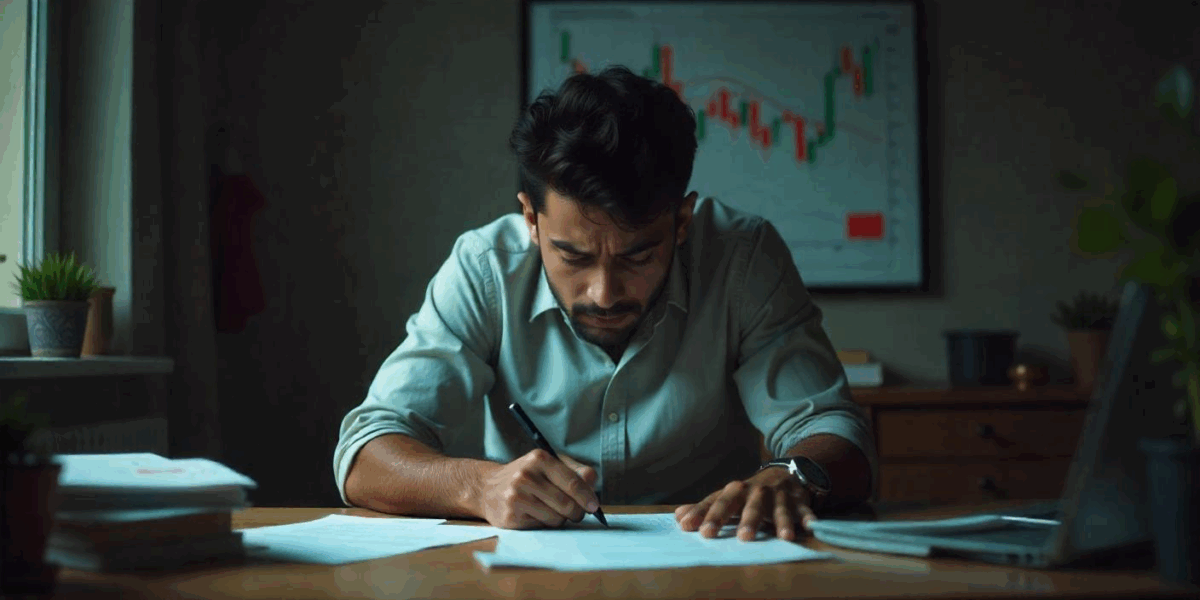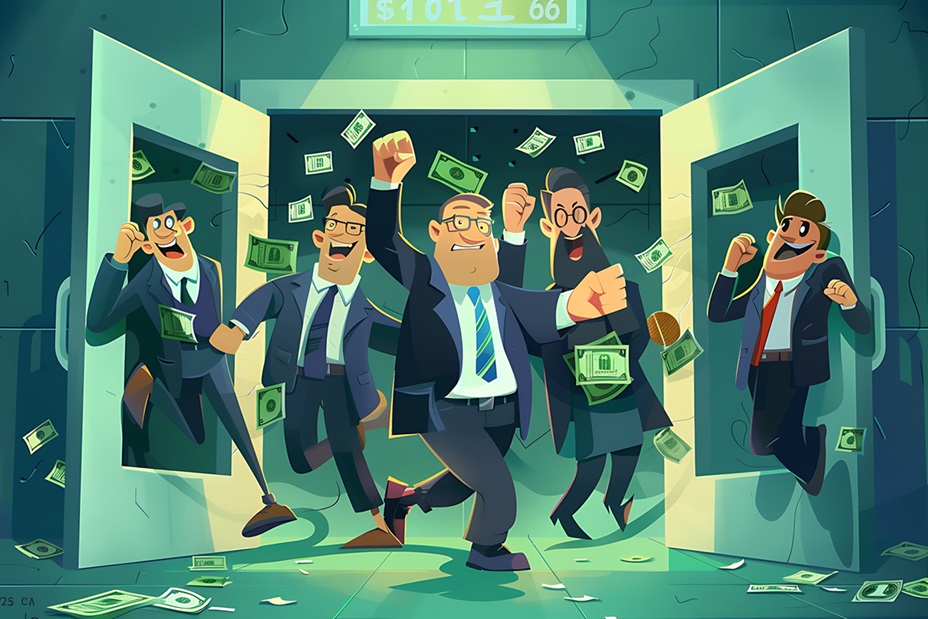“Pehli baar 6 mahine ka profit ek din mein ban gaya tha… us din samjha market sirf paisa dene ke liye bana hai.”
Anish Wadhwa, now in his early 30s, still remembers the rush of that day. The thrill. The disbelief. And the illusion that followed.
This isn’t your typical story of a retail trader who tried his luck and walked away.
This is about someone who started with caution, moved with curiosity, and ended up caught in a debt spiral that still hasn’t let him go.
The First Step: Swing Trading and Hope
Back in 2017, Anish was 27, living off rental income from a family property, and dabbling in the markets part-time.
Swing and intraday trades were his entry point, not because he had huge capital, but because he had intent.
“I didn’t know much, just what I saw on TV. News chalta tha, and that was enough to think I’m doing something.”
Things were going okay for a while. No wild profits, but no huge losses either. That delicate balance lasted for about a year.
Then, like most beginners lured by quick money, he stumbled upon options buying.
The Day the Market Gave Too Much
One day, he put in a trade, without knowing it was expiry day, and made six months’ worth of profit in a single session.
“Main samjha, yeh toh magic hai. Expiry kya hoti hai, ye bhi nahi pata tha, par paisa aa gaya.”
That one trade ruined him. Not in the moment, but slowly. Gradually. Like the silent erosion of a cliff’s edge. He started trading more, thinking he had cracked the code.
He hadn’t.
The Gap That Followed
After a series of random wins and losses, he lost everything he’d made.
“Tab samjha expiry kya hoti hai… aur market ka asli nature bhi.”
He took a break.
From late 2019 to 2020, when COVID struck and the markets crashed, Anish was in learning mode.
He watched videos, bought courses from genuine educators, and finally began to understand the language of the market.
Pivot points, leading and lagging indicators, and risk management terms he once ignored became his everyday vocabulary.
But by then, he had no capital left. Even the rental income was drying up.
The Loan That Changed Everything
In mid-2020, he took a massive step. A business loan of ₹25 lakh, mortgaging his property.
A portion went into a commercial venture; the rest went back to trading.
That’s where the free fall began.
“Day by day losses shuru ho gaye. Option buying ne band baja diya.”
He poured all ₹25 lakh into the market, thinking he now knew how to recover his past losses.
But the losses piled up faster than he expected. Somewhere between ₹10-₹16 lakh disappeared in trades that he thought were well-calculated.
He started recovering a portion, almost ₹10-12 lakh, but the pressure of loans made him increase position sizes.
And then came the death blow: Overconfidence + Leverage + No stop loss.
In just one month, it was all gone.
The Cost of Hope
With no father around, the pressure of family fell squarely on him. His sister’s wedding was coming up, and in a desperate attempt to cover expenses, he dipped into her FD too.
That, too, was lost in the market.
“Shaadi fix ho chuki thi… functions bhi. Risk lena pada. 5 lakh aur daale… fir dheere dheere 25 lakh aur chale gaye.”
What he couldn’t provide, his sister managed with her savings. But the guilt didn’t leave him.
He stopped thinking about his marriage.
1.25 Crore. That’s the Number.
Anish’s need to clear debts turned into a dangerous obsession. He began borrowing from lending apps, banks, and even private lenders.
“Pichle saal August tak 80 lakh tak loan ho gaya tha. 35 lakh aur loan liya, mortgage karke. Bas interest pressure se jaan nikal rahi thi.”
He gave ₹10-15 lakh to others to settle personal loans. Tried again to trade out of debt, and each expiry day became his personal battlefield.
Most of them ended in loss.
And now, he stands at a debt of around ₹1.25 crore. The bank EMIs are overdue. He has requested time, planning to sell his commercial building to repay the loan.
He lives modestly. Rental income supports his mother, and whatever remains is enough for daily expenses.
He has read books. He understands price action. Sometimes, he even earns ₹1-1.5 lakh in a few trades.
But by the fourth day, the pattern repeats, overtrading leads to fresh losses.
“Akele aadmi ke upar agar sab zimmedaari ho… toh market mein chalna aur mushkil ho jata hai.”
What We Can Learn
Anish’s story isn’t rare—but it is real. This isn’t just about bad trades. It’s about what happens when trading becomes your only escape route.
It’s a cautionary tale of how knowledge without control and experience without discipline can be more dangerous than ignorance.
No flashy endings. No “turned it around” narrative, at least not yet.
But there’s one thing Anish still holds onto: Hope, not the blind one that ruined him, but the kind that’s built from painful awareness.
“Market har kisi ko paisa de sakta hai… par le bhi sakta hai. Mujhe ab samajh aa gaya hai ki agar karna hai, toh sahi tareeke se hi karna hai.”
If you’re someone trying to make it in the markets, remember: You don’t have to lose everything to learn. You can learn from Anish’s story.







